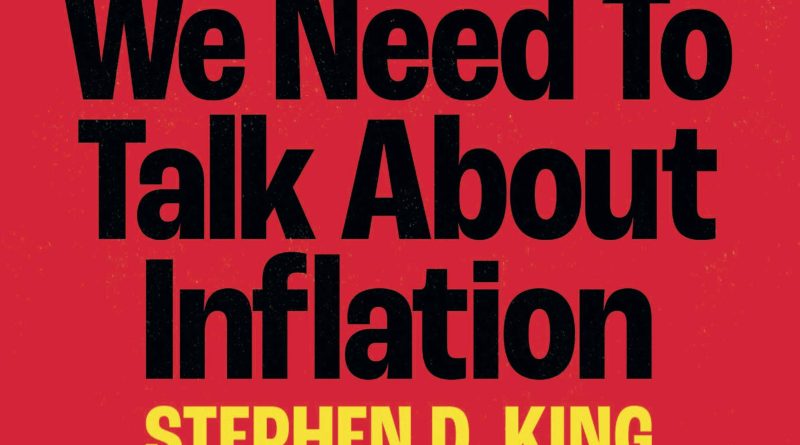Battling Godzilla: Inflation, Recession and the fight against the COVID-19 economy
There may be no greater economic menaces than inflation and recession, which alone and combined can metamorphose into a towering, saber-toothed Godzilla, destroying companies, mangling careers and, sometimes, vanquishing governments.
Just see why Ronald Reagan and Bill Clinton successfully defeated incumbent presidents so they could take a turn at saving the day, economically at least, from the Oval Office. If inflation takes a turn for the worse or there’s a deep-dive recession, President Biden could suffer the same fate as some of his predecessors.
After the 1930s Great Depression, which helped put Franklin Roosevelt into the White House, the 1980 recession remains the country’s most significant economic downturn, with the biggest business news story that year about the nation’s third largest automobile company, Chrysler, receiving a $1.5 billion loan from the federal government so it could remain open. The unemployment rate reached 7.6%, about 8 million people, and inflation closed in on 14.5% that summer, according to the Federal Reserve, a time when people were likely solidifying their choice for the next president, Reagan or the incumbent, Jimmy Carter.
While the 2023 economy isn’t nearly as battered as 1980’s – unemployment is at 3.4% or nearly 6 million people and inflation is 4.9% — the biggest surprise might be that government officials appear to be about as eagle-eyed at recognizing inflation and the prospect of a recession as their predecessors in the pre-Paul Volcker era of the 1970s.
As Stephen D. King, an economics advisor at HSBC bank in London and author of We Need to Talk About Inflation: 14 Urgent Lessons From The Last 2,000 Years reminds us, consider Fed Chairman Jerome Powell’s comments in Jackson Hole, Wyo., in August 2021, 11 days after the U.S. Bureau of Labor Statistics released the Consumer Price Index, which foretold what was coming, with food prices up 3.4% in a year’s time and gasoline prices vaulting nearly 42% in the same period:
“… longer term inflation expectations have moved much less than actual inflation or near-term expectations, suggesting that households, businesses and market participants also believe that current inflation readings are likely to prove transitory and that, in any case, the Fed will keep inflation close to our 2% objective over time,” he said.
That’s reason enough to read this book. Not only is it an essential piece of work for anyone who’s experienced an economy gone haywire, it’s also critical for anyone who wants to understand that while inflation can be dormant, it’s never eliminated.
“The re-emergence of inflation represents something of a watershed moment in the development of the global economy,” writes King. “For much of the last three decades, both policymakers and investors focused much more on the dangers of deflation, a world in which prices and wages threatened to fall rather than rise, and in which interest rates could drop to zero or marginally below.”
Those who should know, like Powell and Treasury Secretary Janet Yellen, writes King, never saw the return of inflation as likely. It was “unimaginable,” he said, which provides some insight as to why they described it as “transitory” until, suddenly, they realized, gosh golly, it wasn’t.
“Policymakers couldn’t agree on why inflation was back,” King writes. “Some blamed the COVID-19 pandemic. Others blamed President Putin. Few, however, were prepared to admit that inflation’s return was, perhaps, a reflection of a more deep-rooted problem.”
In addition, King writes, the prognosis was that inflation would drop out of sight – quickly.
“Central bankers’ forecasts of inflation suggested that any near-term increase would be transitory: within two or three years, inflation would return to ‘target’ – in most cases a number close to 2%,” King adds.
Given that latest report from the U.S. Bureau of Labor Statistics showed inflation down from 8.3% a year earlier, Powell and Yellen’s “transitory” moniker may yet be proven to be an apt description.
Still, what King does so well is describe how COVID-19 lockdowns sparked inflation, showing who benefited and who didn’t from elevated prices, and why politicians sometimes prefer inflation. A key problem with the pandemic’s lockdowns was that it prevented markets from operating with real-time pricing information.
“When lockdowns ended and markets reopened, a peculiar state of ‘economic ignorance’ was revealed. Underlying supply and demand conditions had undoubtedly changed. Yet many prices had been preserved in aspic from months earlier,” the author writes.
But that wasn’t the worst of it. As King shows, when the economy becomes challenging, government officials often see the solution as flooding it with money, thereby lowering its value.
“The printing press is a temptation precisely because it is an alternative to tax increases or spending cuts, a stealthy way in the short run of robbing people of their savings, particularly given the predilection of policymakers to blame inflation on ‘forces beyond their control,’” he writes.
The pandemic was certainly an example of a force beyond the control of lawmakers and President Trump. The CARES Act, passed by Congress shortly after the implementation of the lockdowns in March 2020, which provided more than $2 trillion in financial relief to businesses, individuals, and their families, is now considered by the Fed to have sparked inflation.
But as the U.S. Bureau of Labor Statistics points out, unemployment surged as COVID-19 hit the country, measuring at 13% in 2020’s second quarter. It’s no surprise that then-U.S. Senate Majority Leader Mitch McConnell (R-Ky.) endorsed the legislation, saying, “No economic policy can fully end the hardship so long as the public health requires that we put so much of our commerce on ice. This isn’t even a stimulus package. It is emergency relief. Emergency relief.”
So, if inflation, recession, unemployment, or a pandemic rear their ugly heads, either alone or combined, it doesn’t matter if an elected official is a fiscal conservative or a free-spending liberal. The money’s printing press, King warns in lesson six, is always a possible solution to what ails the economy.
The biggest criticism of this book is that, too often, King doesn’t identify which central bankers he’s referring to. He also doesn’t delve enough into supply chain and labor issues that resulted due to COVID-19. Still, this is an outstanding piece of scholarship, especially in a time of great economic and political uncertainty. King shows how inflation comes about and what happens when it strikes. The book is well-sourced and a tremendous first take on the injuries caused by COVID-19 on the British, European and U.S. economies.
Douglas Page is the associate editor of SD Metro Magazine. He can be reached at dpage@sandiegometro.com


